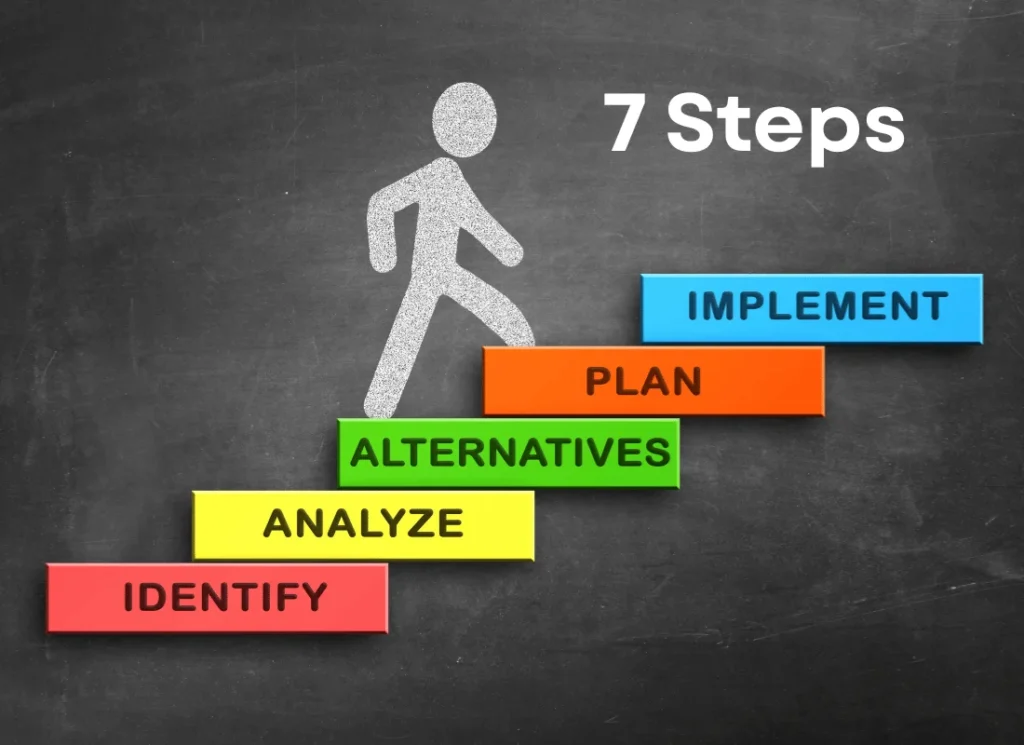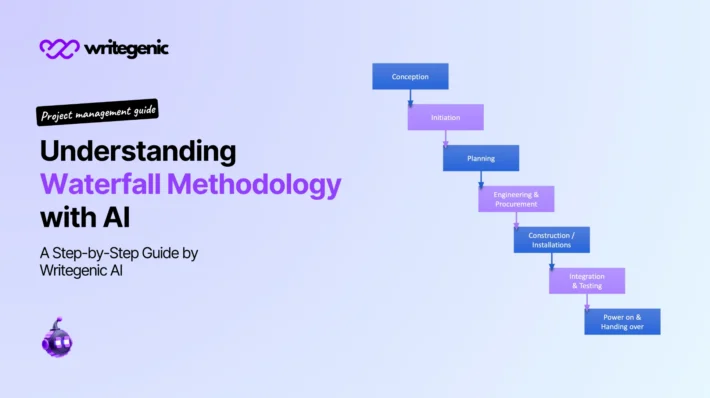Effective Problem Solving and Decision Making in Business

What do we mean by problem solving and decision making? People and companies need to make decisions every day and these decisions need careful analysis and a smart approach. Managing problems and choosing strategies for growth are two key skills that influence both our jobs and our lives. Problem solving and decision making that are used well help lead to new ideas, improved output and success.
In this guide, we will discuss what problem solving and decision making are, the relationship between them, the 7 steps of problem solving and decision-making and how they are used in business settings.
Table of Contents
What Is Problem Solving and Decision Making?
Problem solving and decision making are mental tasks that help people overcome troubles and pick the right actions. Still, though they relate to each other, they have different purposes.
Problem solving
Problem solving means finding, explaining and dealing with roadblocks to achieving a particular goal. You must use reasoning, imagination and analysis to discover what’s wrong and develop good answers.
Decision making
Making decisions means looking at several alternatives and choosing what is best. On many occasions, it happens after problem solving—when a clear problem and options are available, a solution must be selected.
Such skills are useful for many decisions, whether you’re choosing your employment, controlling your finances or dealing with customers. Making confident and strong decisions through your skills will make it easier to navigate all sorts of uncertainty.
What Is Problem Solving and Decision Making in Business?
Business people need these abilities even more than other professionals. Such things have effects on each business area, from strategy to operations, experience for customers and introducing new ideas.
Problem Solving in Business
Business problems may come from many sources such as internal problems, changes happening outside a business, advancements in technology or unhappy customers. A business must solve problems by understanding their origin, reviewing their consequences and creating methods to ensure the situation does not happen again.
A company with low morale doesn’t improve the situation just by planning a team lunch. Instead, they study employee feedback, check each team’s workload, review how managers operate and build a plan for keeping employees engaged long term.
Decision Making in Business
When solutions have been found, decision makers check each one using data, how feasible it is, its risks and whether it matches the organization’s goals. When making business decisions, leaders consider several possible results like profits, brand influence and what stakeholders think.
Strong business leaders can quickly and fully decide using SWOT analysis, KPI dashboards and predictive models.

The 7 Steps of Problem Solving and Decision-Making
When there is a structured approach, decisions are well-planned and problems are handled successfully. The 7-step model is chosen by many for improving decision quality and resolving issues.
1. Identify the Problem
This is the start of the process. Specify what kind of problem you have when you contact the business. When the problem isn’t clearly defined, the solutions won’t be right either. Ask yourself: What problem is this really about? What are the signs vs. what is behind them?
2. Gather Relevant Information
You should collect facts, opinions and constraints as well as any other necessary data. Customer opinions, workers’ ideas, how much is achieved and measurement against competitors are all part of this.
3. Analyze the Information
Study the data to find repeated patterns, the main reasons for the issue and how widespread it is. You can solve difficult problems by using cause-and-effect diagrams, Pareto charts or the 5 Whys technique.
4. Develop Possible Solutions
Try to think of many options. Make sure to suggest creative, safe and non-standard ideas. Generating ideas without judging them now is the main objective.
5. Evaluate Alternatives
Think about the benefits and disadvantages of every solution. When choosing, take expenses, time used, resources involved, dangers and results into account. Obtain opinions from stakeholders if necessary to judge if every option meets the strategic plan.
6. Make the Decision
Pick the strategy that fits the problem best and meets the goals you want to achieve. It’s in this part that leaders must decide and assume responsibility for their actions.
7. Implement and Monitor
Try out the solution you selected. Work out how to carry out the plan, decide who will do each part and define outcomes that are measurable. Keep an eye on how things are moving and change things as often as needed.
Relationship Between Problem Solving and Decision Making
Problem solving and decision making are terms that people confuse, yet they are different yet similar processes. When you know how they relate, things become clearer and more efficient.
- Problem solving deals with finding out the issue and considering possible answers.
- Decision making means inspecting all the available alternatives and choosing the best one.
Most of the time, figuring out a solution to a problem results in making a choice. For example, when deadlines are not met, a manager will look into the causes (problem solving) and then opt for a new software management solution (decision making).
Having a clear mind, knowing how to handle emotions and following a structured way help both techniques. When working well together, the processes make progress easier, remove confusion and help people work towards the same results.
| Aspect | Problem Solving | Decision Making |
| Objective | Identify and resolve problems | Choose the best option |
| Focus | Root cause analysis and solutions | Selecting from alternatives |
| Tools Used | Brainstorming, root cause analysis | SWOT, pros/cons, risk analysis |
| Outcome | Solution to a problem | Final choice or action |
Why These Skills Matter Today
In today’s fast and competitive world, it is very important for people to solve problems and make wise choices.
- For individuals, these skills improve a person’s confidence, ability to resist challenges and their ability to cope with changes. If you are studying, job hunting or running a business, being able to analyze things and act wisely will make you special.
- For teams and organizations, they help teams and organizations improve teamwork, find new solutions and grow strategically. Teams that use a step-by-step approach and rely on evidence to make decisions are more productive, agile and successful.
Technology, globalization and changes in the market make challenges an ongoing issue. But a proper mindset and process will allow you to deal with these issues successfully and lead with knowledge.
Conclusion
So, what does it mean when we talk about problem solving and decision making? It means thinking carefully about problems and using suitable methods to solve them and decide properly.
If you and your organization use the 7 steps of problem solving and decision-making, and understand how problem solving relates to decision making, you will be better able to manage challenges.
In all situations, from regular life to big business moves, it’s important to use these skills to overcome difficulties and make our ideas happen.
FAQs
What is problem solving and decision making in business?
Problem solving in business is about dealing with issues such as poor processes or less revenue. The process of decision making includes picking solutions, investments or relationships that can address those challenges and help the organization grow.
Why are problem solving and decision making important skills?
Having these skills makes work clearer, speeds up completion and helps avoid pricey errors. They support both people working and living together in choosing wisely and at the right times.
How can I improve my decision making and problem solving skills?
Try to organize your thoughts, use procedures, learn what others have to say and use practice sessions or real tests in math. Reviewing case studies and teaming up can benefit as well.


